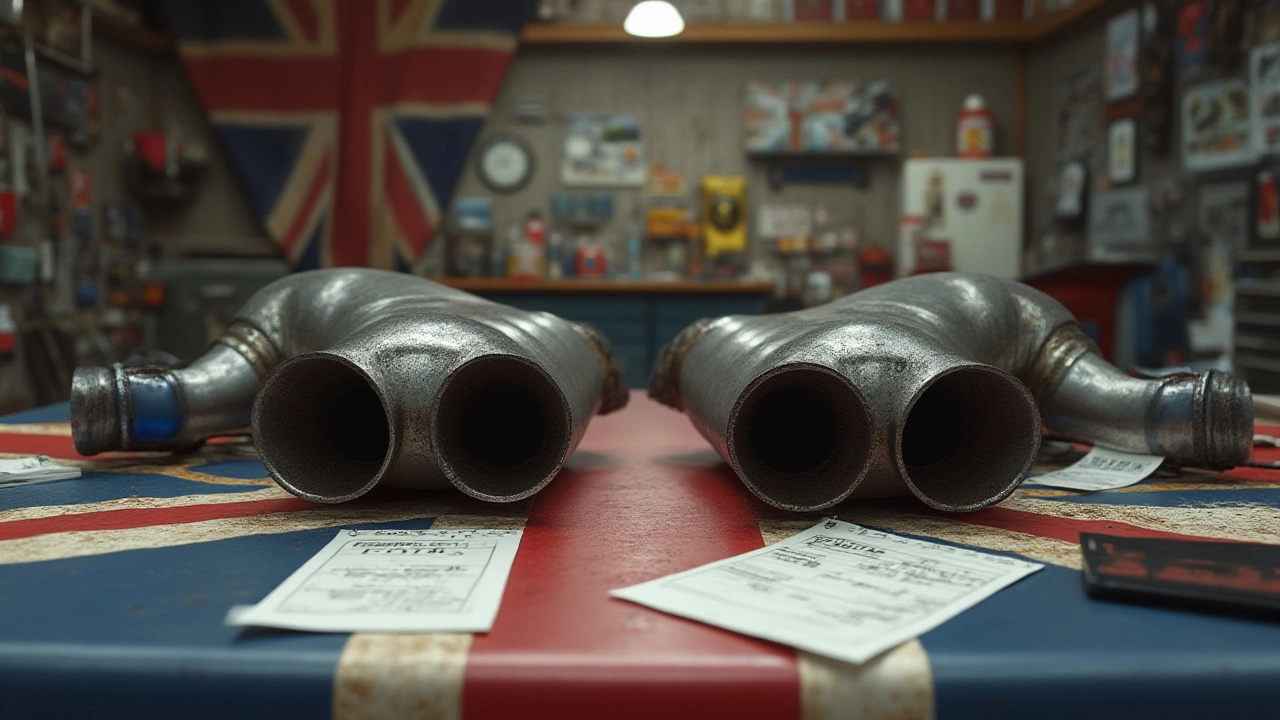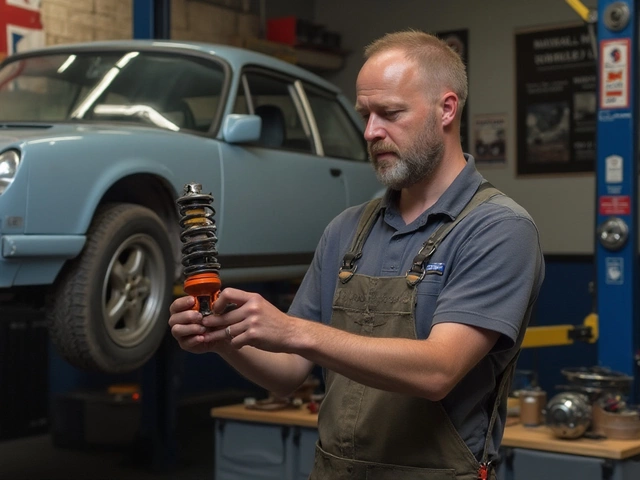Ever stood behind a car and felt your chest vibrate from the deep rumble of its pipes? It’s hard to ignore. Drivers obsessed with sound, style, or squeezing out extra horsepower have stared at their factory exhaust and wondered: Is it really worth dropping a paycheck for an aftermarket exhaust? Car forums are packed with people swearing by them, but there’s always a skeptic waving a warranty or noise ordinance. Cutting through the noise (literally) starts with real evidence, not wishful thinking.
What Does an Aftermarket Exhaust Actually Do?
Let’s clear something up: aftermarket exhausts aren’t just about looking cool or waking up your neighbors at 6 AM. The real story starts with how your car breathes. Think of the exhaust as your car’s nose and mouth—if it’s clogged or restricted, performance suffers. Most stock systems focus on keeping things quiet and affordable. They often use smaller pipes, crimped bends, and heavy mufflers to mute sound but also restrict airflow.
Aftermarket systems swap those stock pipes for wider, smoother, mandrel-bent tubing and less restrictive mufflers. The result? In theory, better airflow can give your engine an easier way to push exhaust gases out, letting it make a bit more power—sometimes 2%, sometimes 10%—depending on your engine and the type of system. Not every system is a game-changer. Cat-back kits, which replace everything from the catalytic converter back, are the most common. Axle-backs only change the rear part, so the main performance change is in sound, not power. Header-back systems replace everything from the header to the tailpipe and usually cost more.
There’s also a big style factor. Aftermarket tips and polished finishes turn practical plumbing into a focal point. Car shows are packed with brands like Borla, MagnaFlow, Flowmaster, Akrapovič, and Armytrix—names you rarely see on a new car lot. If you’re after that snarly turbo whistle or V8 bellow, swapping mufflers (or going full cat-back) is the ticket.
However, don’t believe every boost figure you see. Some “dyno results” look generous because the car was tuned or stock air filters were replaced at the same time. Still, honest gains matter. A 2023 test from Car and Driver on a turbocharged 2.0L sedan showed a quality cat-back setup could give 4-8 more horsepower and save up to 12 pounds—worthwhile, but not earth-shattering. On a high-performance V8, the same kit netted closer to 16hp and shaved off nearly 25 pounds, thanks to a lighter stainless design.
Sound changes are universal, though. Even on modest 1.6L hatchbacks, you’ll hear a deeper growl and throatier idle. Some drivers love it. Others, not so much—especially after a year of droning at highway speeds. On sports cars, you can often tune sound with different baffling or electronic valves, giving you stealth or shout-on-demand.
Bottom line: Exhaust swaps do more than just make noise. The real trick is matching your expectations (and budget) with what your car—and your ears—can handle.

The Real-World Upsides and Downsides
The pros don’t stop at horsepower or decibels. One big draw is weight savings. Factory exhausts are made from thick steel with lots of bends. Aftermarket setups use lightweight metals—including stainless and titanium—shedding weight where it matters. Lighter cars handle better, stop faster, and use less fuel. Check out these stats for a few popular systems:
| System | Stock Weight (lbs) | Aftermarket Weight (lbs) | Weight Saved |
|---|---|---|---|
| Borla S-Type (Mustang GT) | 52 | 32 | 20 |
| MagnaFlow (Golf GTI) | 38 | 27 | 11 |
| Akrapovič (BMW M3 G80) | 50 | 29 | 21 |
With less weight, some drivers report a slightly sharper throttle feel and nimbler handling. It won’t turn a family sedan into a racecar, but every little bit helps—especially on track days.
Sound customization is where the fun really begins. Whether you’re after a refined rumble or an all-out race car bark, you’ll find options with different muffler designs, resonators, and sometimes programmable flaps. On popular enthusiast models, shops can even custom-tune sound levels. For example, a Civic Type R owner in Chicago installed a valve-controlled Milltek exhaust and could switch from quiet to wild with a smartphone app—or keep his neighbors happy and his warranty intact. Most exhausts for daily drivers comfortably pass legal noise limits, but not always. California, for instance, cracks down on exhaust systems that exceed 95 decibels. If you’re worried, always check your local laws before buying.
Corrosion resistance is another selling point. Companies that use high-grade stainless or titanium make systems that shrug off winters and salted roads better than most factory pipes ever will. Many high-end brands back it with a lifetime warranty—even transferable to the next owner, a nice perk if you’re the buying-and-selling type.
But some downsides are hard to ignore. Not every system adds clear power, especially on naturally aspirated engines with mild factory setups. Cheap “universal” kits can be worse than stock—louder, prone to rust, or causing annoying vibrations. Professional install is a must. Bad fitment can lead to rattles, pipe scraping speed bumps, or even failed emissions tests. If your exhaust messes with oxygen sensors or catalytic converters, you might see that dreaded check engine light.
Another gotcha: resale value. Not every buyer wants a loud, flashy system. If you keep the stock kit on hand, reinstallation is easy and often increases trade-in value. A dealer will likely ding your car’s value for a homemade-sounding or poorly installed aftermarket setup.
Insurance and warranty can get tricky, too. Most reputable systems are warranty-safe since they don’t touch emissions gear. Still, it’s smart to double-check with your automaker first. Insurance companies rarely blink at axle-back installs, but if your new exhaust triggers a fire or damages wiring, you might be out of luck. A little homework goes a long way. As Motor Trend magazine stated last year:
"The best aftermarket exhausts offer just enough sound and style, with carefully engineered fitment. Done right, they’re one of the few bolt-on mods that deliver both fun and function without trade-offs."
Don’t cut corners on quality. Trusted brands invest in research and testing. Knockoffs don’t. A well-made aftermarket exhaust should last as long—or longer—than most cars. Always check for certifications like CARB (California Air Resources Board) if you’re registering in a smog state.
Finally, there’s the social side. You’ll get more thumbs-up at cars and coffee, but also more attention from the cops—especially if you treat every street as a dragstrip. Just because an exhaust is “legal” doesn’t mean everyone wants to hear it at midnight. Pick your volume (and driving habits) wisely.

Are Aftermarket Exhausts Worth the Cost?
Sticker shock is a thing. Pricing for a full cat-back system from a reputable brand like MagnaFlow, Borla, or Remus usually lands between $800 to $2,500—parts alone. Add another $200-$600 for professional installation, plus about $100 a year to keep everything rust-free in snowy states. Quick-and-dirty universal kits might start at $250, but quality (and fitment) is a gamble. Sound and finish aside, you might just get what you pay for.
Is it money well spent? That depends entirely on your car and what you actually want. Daily drivers might only notice a throatier idle and a bit of visual flair. Track junkies or hardcore enthusiasts can unlock real horsepower and sharper throttle response, especially when combined with other mods like a cold-air intake and a tune. On turbo cars—think WRX, Golf GTI, Supra—a good exhaust often brings extra turbo spool sounds and smoother high-RPM power.
| Car Type | Typical HP Gain | Sound Difference | Estimated Cost (incl. install) |
|---|---|---|---|
| Compact Sedan (NA) | 2-4 HP | Mild-to-medium | $700 - $1,200 |
| V6/V8 Muscle Car | 8-20 HP | Medium-to-wild | $1,200 - $3,000 |
| Turbocharged Sport Compact | 5-17 HP | Customizable | $1,000 - $2,500 |
Go into it with both eyes open. Tell your shop exactly what you want—loud or subtle, daily use or racetrack. If possible, listen to customer cars before you buy. Some shops let drivers test systems or at least hear sound clips under real-world driving. Warranty and emissions compliance are critical. CARB-legal kits are a must-have in California and New York. Even in quieter states, a ticket for excessive noise (or failed state inspection) is a hassle no one needs.
On the resale front, try to hang onto your factory setup. Any good installer can swap back to OEM pipes in an hour or two. Some car buyers specifically hunt for tastefully modded rides; others run the second they see loud exhausts listed on Facebook Marketplace.
And don’t forget the social side. Exhaust mods are their own community. Some drivers swap stories at local meets, sharing tips about which brands drone less or where to find hidden dyno days. You’ll find die-hard loyalists who refuse to drive anything without that signature growl. Others sell their system after six months because the sound wore them out. Your best bet? Know your goals, set a clear budget, and don’t fall for hot air—literally or metaphorically.
So are aftermarket exhausts worth it? If you’re itching for more sound, some real (if modest) power, lighter weight, and a little car-culture cred, then yes—if you pick the right system, install it right, and drive with some respect. If you’re hoping for a massive speed boost from bolt-ons alone, you’ll be let down. Horses for courses, as the British say. And if the only thing you ever want to hear at 70 mph is your favorite song and the hum of the AC...maybe keep things stock.






